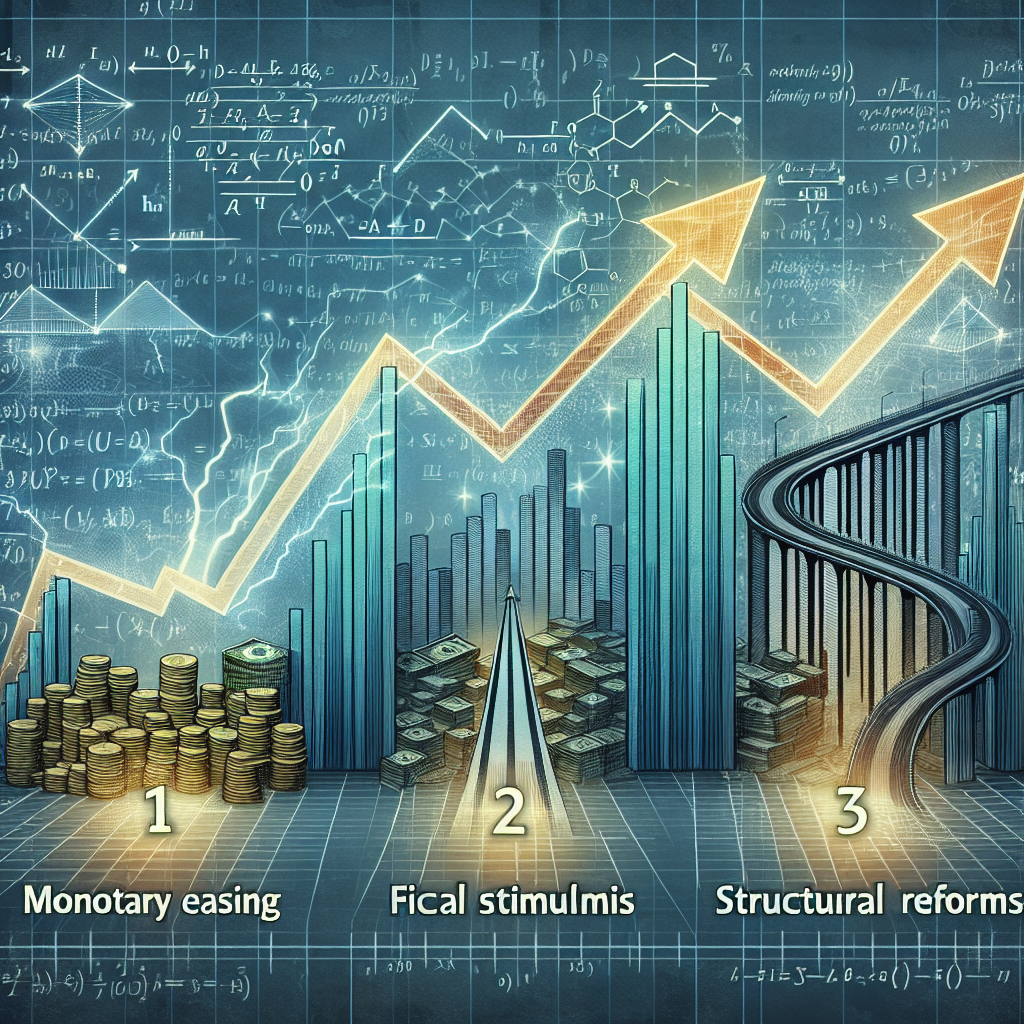Understanding Abenomics: Japan’s Economic Revival Strategy
Abenomics is a term that refers to the economic policy initiative launched by Shinzo Abe, Japan’s former Prime Minister. Abenomics aims to revive Japan’s economy after years of stagnation, which included deflation, an aging population, and a shrinking workforce. This blog post will explain what Abenomics is, its three main strategies, and its impact on the Japanese economy.
The Background of Abenomics
In the early 1990s, Japan faced a significant economic crisis when the asset price bubble burst. This led to what many call the “Lost Decade,” a period where the economy did not grow as expected. Japan struggled with low consumer spending, high public debt, and deflation—a situation where prices fall, making consumers postpone purchasing, further slowing down the economy.
In December 2012, Shinzo Abe returned to power and introduced Abenomics to tackle these long-standing issues. The initiative consisted of a mix of aggressive monetary policy, fiscal stimulus, and structural reforms.
The Three Arrows of Abenomics
Abenomics revolves around three main strategies, often referred to as the “Three Arrows.” Each “arrow” serves a specific purpose in reviving Japan’s economy.
1. Aggressive Monetary Policy
The first arrow is aggressive monetary policy, aimed at ending deflation and boosting economic growth. The Bank of Japan (BOJ) took several measures, including lowering interest rates and engaging in quantitative easing (QE).
-
Quantitative Easing: This is where the central bank buys government bonds and other financial assets to increase the money supply. By doing so, the BOJ hoped to encourage banks to lend more money and businesses to invest and spend.
-
Negative Interest Rates: In February 2016, the BOJ implemented negative interest rates, meaning that banks must pay to hold reserves with the central bank. The idea was that this would encourage banks to lend more money to individuals and businesses rather than hoard it.
2. Fiscal Stimulus
The second arrow focuses on fiscal stimulus, which involves increasing government spending to kick-start economic growth. The government deployed various stimulus packages to increase infrastructure spending, support household consumption, and promote growth in various sectors.
-
Infrastructure Projects: The government invested in building roads, bridges, and other infrastructure to create jobs and stimulate demand.
-
Tax Breaks: Abenomics included tax incentives to encourage business investments and consumer spending. While there were challenges in achieving all the goals, the intention was to create a more dynamic economy and improve the living standards of citizens.
3. Structural Reforms
The third arrow emphasizes structural reforms that aim to make the Japanese economy more competitive in the long term. These reforms target areas such as labor market flexibility, improving corporate governance, and increasing female workforce participation.
-
Labor Market Reforms: Abenomics aims to reduce employment regulations that may hinder job creation and promote more flexible working conditions.
-
Corporate Governance: Helping companies become more accountable and transparent was intended to attract foreign investments and support Japan’s position in the global market.
Abenomics Impact: Successes and Challenges
Since its inception, Abenomics has had mixed results. There were some successes and challenges along the way.
Successes
-
Increased Stock Market Values: One of the most visible effects of Abenomics was the sharp rise in the Tokyo Stock Exchange. The stock market saw increased investor confidence, and many companies reported higher profits.
-
Unemployment Rates: Japan experienced a drop in unemployment rates, leading to a tighter labor market that benefited workers.
-
Boosting Consumer Confidence: Some levels of consumer spending improved, driven by increased job security and higher wages, contributing to overall economic growth.
Challenges
-
Stubbornly Low Inflation: Despite aggressive monetary policies, Japan often struggled to reach its inflation targets. The public remained wary, and consumer prices did not rise as hoped.
-
Rising Public Debt: Japan’s public debt increased significantly, raising concerns about fiscal sustainability in the long run. As of 2021, Japan’s debt-to-GDP ratio was one of the highest in the world.
-
Demographics: The aging population remained a significant challenge, leading to a decline in the workforce. This demographic shift impacts economic productivity and increases the burden on the working population.
The Future of Abenomics
As of late 2023, the future of Abenomics and its impact on Japan’s economy remains uncertain. The challenges of inflation, public debt, and demographic shifts continue to pose risks. Policymakers are adjusting their approaches and exploring new strategies to further stimulate economic growth.
Investors and economists are keeping a keen eye on ongoing developments. For those looking to understand market trends and make informed investment decisions, resources like Stock Pulsar can be a valuable asset.
Conclusion
Abenomics represents a significant effort to revive Japan’s economy, addressing the challenges of deflation, a shrinking workforce, and stagnant growth. Through its three arrows—aggressive monetary policy, fiscal stimulus, and structural reforms—Japan has seen some positive changes. However, the path to long-term recovery remains complicated and requires persistent efforts and innovations moving forward. As we look to the future, the evolution of Abenomics will be intriguing to follow, especially as Japan navigates its unique range of economic challenges.



